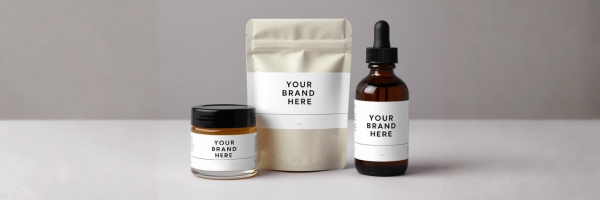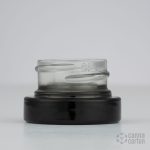The right custom packaging for cannabis products is critical for a brand to stand out and attract customers while remaining compliant with legal and safety regulations.
Yes, it’s the quality of the product that should build loyalty, but it’s the packaging that drives initial sales. It’s an extension of a brand and should accurately represent what a product is and does.
While cannabis manufacturers have control of the brand, ultimately, the design, quality, reliability, and freshness rely on the supplier.
So, selecting cannabis packaging cannot be an afterthought. But, like with anything, knowing what to look for is the largest hurdle for most cannabis manufacturers.
To help streamline the search, here are six packaging factors to keep in mind.
1. Legal requirements
Rules and regulations for cannabis packaging are constantly evolving and vary from state to state.
While breaking down the requirements of every state would be overkill, here are a few common examples that may need to be accounted for:
- Child-resistant: Significantly difficult for children to open.
- Resealable: Packaging must easily be reopened and resealed to allow for an extended multi-use lifespan.
- Tamper-evident: Unintended or deliberate tampering with the product is obvious.
- No resemblance to commercial food products: There’s no confusion with recognizable food brands.
- Opaque: The cannabis product is not easily recognizable.
- Contamination protection: Prevent external elements such as microorganisms, moisture, air, dirt, and chemicals from reaching the product.
Since federal regulations prohibit the sale of cannabis outside the state where it’s grown, manufacturers can prioritize understanding the laws where they operate.
A company’s packaging must meet all current and forthcoming regulations to remain compliant. Always err on the side of being cautious. If possible, work with a packaging provider who is aware of regulations and can easily offer a range of alternatives to meet different requirements.
2. Safety and regulatory requirements
Child-resistant, resealable, and tamper-evident packaging are all technically safety requirements. However, labeling laws are the most rapidly evolving variable. Label requirements also differ from state to state and typically follow guidelines similar to the food and pharmaceutical industries.
Requirements ultimately depend on the specific cannabis product being sold, but typically require elements like a statement of identity, visual warnings, and applicable dates related to cultivation, manufacturing, expiration, etc. Design limitations, such as required simple or generic visuals, must also be accounted for.
Because label requirements are shifting, a supplier who can handle specific production amounts and easily adapt to different designs is needed. This will help avoid reprints and ensure the exact number of labels needed for a given supply is maintained without unnecessary waste or underproduction.
3. Sustainability
According to Chicago-based cannabis data company Brightfield Group, 69% of cannabis buyers “sometimes” or “often” purchase products with sustainable packaging, and nearly a quarter (23%) are frequent buyers.
Consumers want to see brands that support sustainable practices. For packaging, this may mean more minimalistic designs or smaller sizes that produce less waste.
However, it’s not just about appearing sustainable. Customers will dig deeper and want to verify that the company is using environmentally conscious packaging and manufacturing practices. That means the manufacturer used to source materials, design, produce, and ship packaging must have strong sustainability practices in place.
Adopting sustainable practices is an investment. It helps stand out from competitors and attract more clients who value brands that make an environmental impact. The reality is that cost constraints in a highly regulated industry leave many businesses unwilling to make the jump.
Which brings us to our next consideration.
4. Quality and cost
The overall quality and presentation of a package say a lot about the product. It may be tempting to save a few bucks and use a cheaper option, but that creates unnecessary risk.
A lower-quality or budget supplier may lead to problems with brand application or compliance. There’s also a chance the product could be damaged if the packaging isn’t up to a certain quality standard. However, the need to stick to a budget and find opportunities to cut costs is also a requirement to be aware of.
In this case, it’s about finding a balance between quality and cost.
Take the time to find a supplier who can offer a range of options at different price points that all meet a high level of quality and consistency.
Remember, investing in high-quality packaging can enhance the chances of making a positive impression, generating more sales, and ultimately saving money in the long run.
5. Type of packaging
Cannabis products can be stored and presented in a variety of packaging formats.
Glass jars, cartons, displays, tins, plastic bags, tubes, and pouches are just a few of the options you’ll come across. Not to mention the additional secondary cartons and boxes that products sit in on store shelves.
Choosing the right type of packaging is personal to each brand. If you’re targeting an audience who wants a more minimal or elegant presentation, opting for glass jars, tins, and premium material pouches is likely the way to go. However, if your customers are more price-sensitive and care about portability, plastic bags and tubes are great options.
Besides keeping current customers top of mind, cannabis manufacturers need to consider the future.
- Will new products be introduced?
- How about different sizes or large format options?
- An eventual upgrade to a more premium option?
In any of these cases, the packaging will need to be changed. And choosing a supplier who can adapt designs and branding easily means there’s no need to seek out another option.
6. Lead times and reliability
Reliability is a necessity in this business. With tight margins, strict regulations, and short shelf lives, consistent packaging is essential to every manufacturer’s bottom line.
So, ask potential suppliers about their typical production and delivery timelines. Start with reviews and, if possible, by talking to existing customers, to gain an initial idea of how they tend to perform.
If there’s still some uncertainty, request to test out a smaller batch that isn’t time-sensitive to gauge performance.
Additionally, with increases in tariffs impacting international shipping prices and delivery times, consider working with a local supplier. It may be more costly upfront, but pricing and lead times are more likely to remain stable.
For example, thanks to CannaCarton’s local supplier and distributor network, we can promise reliable shipping timelines of as little as 15 days on most custom products, and 48 hours on in-stock items.
Customize with CannaCarton
Hopefully, this guide illustrates how important choosing the right cannabis packaging and supplier is for cannabis businesses.
From overall quality and reliability to sustainability and compliance, packaging impacts how customers perceive every product. So, carefully work through the provided factors and avoid being tempted to go with the cheapest option. The more criteria met from this list, the more likely the packaging will resonate with customers.
Need a custom cannabis and CBD packaging supplier who checks all the boxes? Let’s chat.
We’re minority-owned, US-based leaders in sustainability, who take a hands-on approach to design and delivery. We’ll work together step-by-step to ensure packaging remains compliant, keeps products fresh, and represents the brand exactly as expected.
Contact us today for oday for a personalized quote on custom, high-quality packaging.





